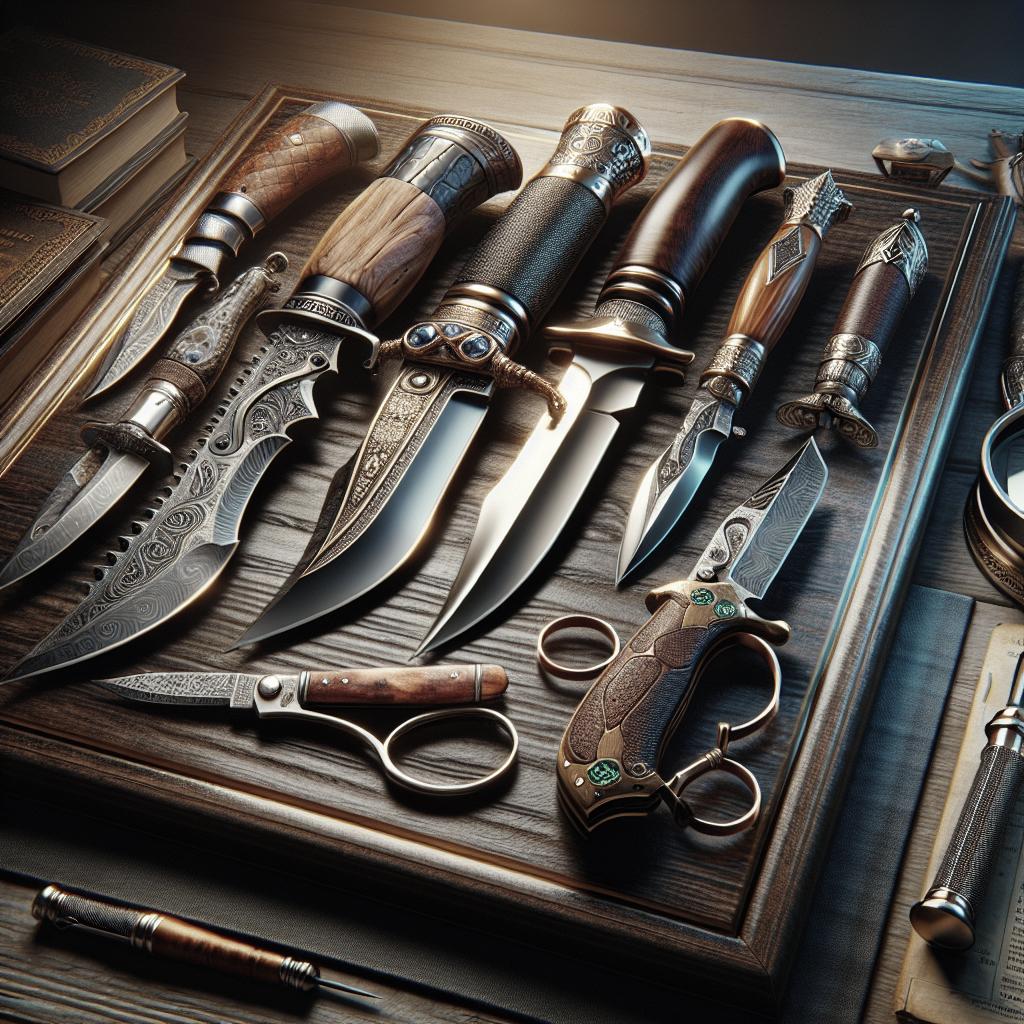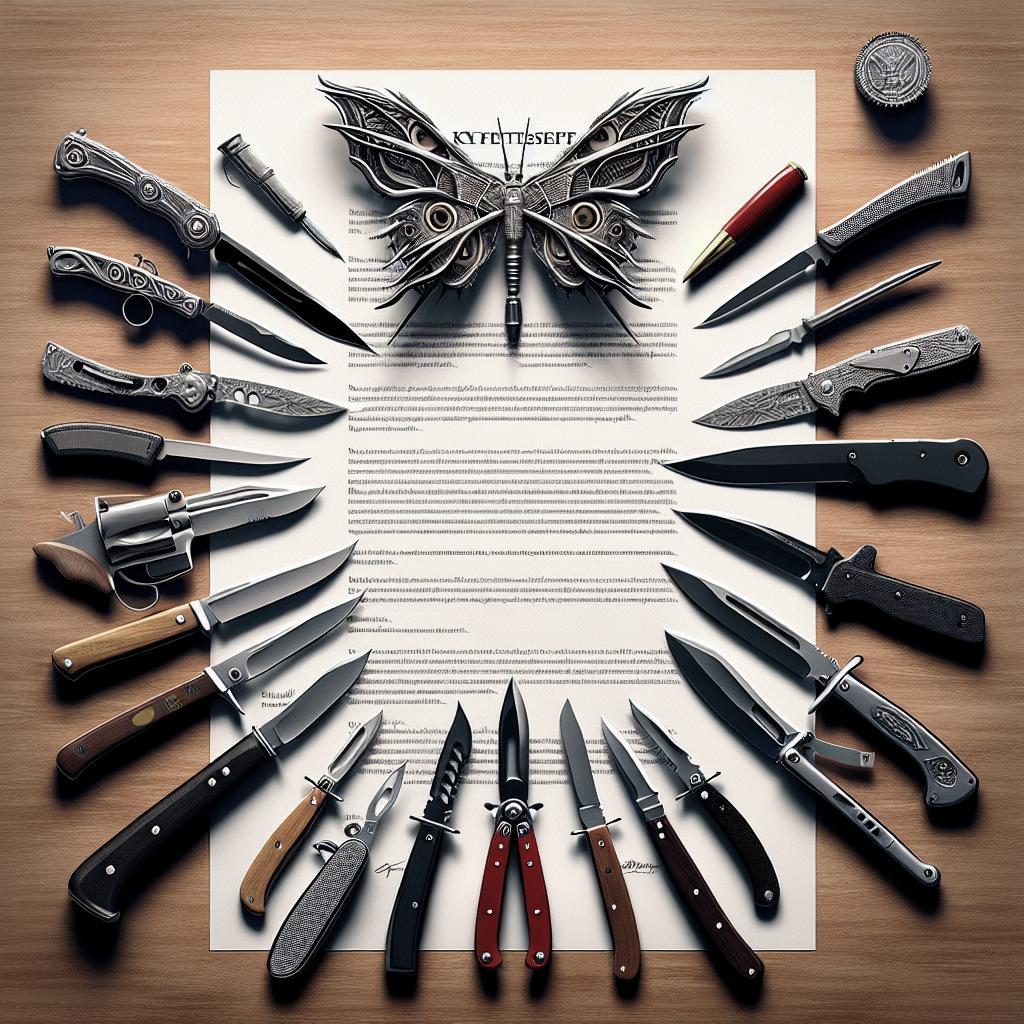The Art of Bladesmithing: A Knife Making Journey
Introduction: How to Make a Knife
Throughout history, the craft of bladesmithing has captivated artisans and enthusiasts alike, offering a unique blend of skill, precision, and creativity. Whether you are an aspiring bladesmith or an experienced hobbyist, this comprehensive guide aims to cover the essential steps in creating your own knife. From conceptual design to the final sharpening of the blade, we will walk through the materials, techniques, and optional enhancements that make knifemaking a rewarding pursuit. Join us on this journey that seamlessly combines traditional methods with modern technology to forge a piece of functional art.
Step 1: Design the Knife (Sketching)
The foundation of any great knife begins with a well-considered design. Start by sketching the outline of your knife on paper. This design phase is crucial as it allows you to experiment with different blade shapes, handle styles, and overall proportions. Think about the knife’s intended use—whether it’s for cooking, hunting, or carving—and tailor your design accordingly.
Sketching also lets you visualize the aesthetic elements of your knife. Consider aspects such as the curvature of the blade or the symmetry of the handle. This creative exercise not only helps solidify your vision but also serves as a blueprint moving forward. Spend adequate time in this phase until you’re satisfied with a design that balances form and function.
Step 2: Design the Knife (CAD – Optional)
For those looking to take their design process to the next level, computer-aided design (CAD) software can offer precision and flexibility. Using CAD tools, you can explore a variety of design configurations, ensuring every dimension is meticulously planned. This step is particularly useful for those who aim for multiple replicable models or who appreciate the precision that technology can provide.
CAD software allows for detailed renditions of your knife, showing multiple perspectives and aiding in structural analysis. It also streamlines future development, as you can save and adjust designs efficiently. While optional, leveraging CAD can enhance your creative process and result in a more refined product.
Step 3: What You Will Need
Preparation is key, and gathering your materials and tools will set the stage for a successful knife-making process. Essential tools include a metal-cutting bandsaw or angle grinder for cutting, files or a belt grinder for shaping, and a drill press for precise holes. You’ll also need equipment for heat treating, such as a forge or propane torch, and sharpening tools, like whetstones or a knife sharpener.
Materials required include high-carbon steel for the blade, brass or stainless steel for bolsters, and your choice of wood or composite materials for the handle. Safety gear is non-negotiable; protective gloves, eye protection, and a dust mask will keep you safe during each stage of construction. Ensure you have a dedicated and well-ventilated workspace to accommodate your tools and materials.
Step 4: Cutting and Shaping the Blade Profile
With your design in hand and tools ready, it’s time to bring your knife to life by cutting and shaping the blade profile. Begin by transferring your sketch onto the steel, using a marker to outline the blade’s dimensions and contours. Carefully cut out this profile using a bandsaw or angle grinder, staying as close to your lines as possible.
Once the basic shape is cut, move on to refining the edges and smoothing the profile. Utilizing files or a belt grinder, aim to achieve a clean, uniform shape that adheres to your initial design. At this stage, precision is key. Attention to detail will lay the groundwork for the steps that follow and ensure your knife’s performance and aesthetics meet expectations.
Step 5: Adding the Bevel
The bevel is an essential component of the blade as it determines cutting efficiency. To add a bevel, fix the blade at an angle and use a belt grinder to carefully grind away material, forming the slope from the spine to the edge. It’s important to maintain an even angle throughout this process to foster consistent sharpness and performance.
This step requires patience and a steady hand. To check your progress, regularly reassess the blade’s symmetry and uniformity. By methodically grinding and ensuring the bevel is even, your knife will boast enhanced cutting capabilities, contributing significantly to its functionality.
Step 6: Drilling and Finishing the Blade (First Time)
After shaping your knife and creating a bevel, it’s time to prepare for handle attachment. Using a drill press, create holes in the tang—the portion of the blade the handle will attach to. These holes must align perfectly with the placement of pins or fasteners you plan to use later on.
With the holes drilled, perform a preliminary finish on the blade to smooth out any rough surfaces and prepare it for heat treatment. Using fine grit sandpaper, remove burrs and imperfections to enhance both the blade’s appearance and its structural integrity.
Step 7: Heat Treating the Blade
Heat treating is a pivotal process that enhances a blade’s durability and sharpness. Begin by heating the blade in a forge until it turns a bright orange. This step alters the steel’s molecular structure, making it more robust. After achieving the ideal heat, quench the blade in oil to lock in these properties.
Once quenched, the blade undergoes tempering, where it’s gently reheated. This crucial step relieves internal stresses, ultimately giving the knife its desired hardness and flexibility. The result is a resilient, efficient blade ready to endure rigorous tasks.
Step 8: Finishing the Blade (Second Time)
Post-heat treating, the blade needs a final finish. Using progressive grits of sandpaper or a fine belt sander, polish the blade to your preferred level of shine. This intricate process not only refines aesthetics but also removes any oxide layers formed during heat treatment.
Focusing on finer details during this stage can vastly improve the blade’s appearance and effectiveness. A well-finished blade will not only look remarkable but also glide effortlessly through materials. Ensuring a polished and sleek surface maximizes your knife’s potential.
Step 9: Creating and Attaching the Bolsters
Bolsters provide additional strength and improve the knife’s balance. Cut your chosen bolster material—typically brass or stainless steel—according to the blade’s dimensions. The bolster should fit snugly against the blade and handle, enhancing stability.
Use epoxy to adhere the bolsters to the blade. Ensure they are aligned perfectly and clamp them in place until the adhesive cures. Proper attachment of bolsters is vital for both practical and aesthetic purposes, providing a sturdy transition between blade and handle.
Step 10: Attaching the Handles
With bolsters in place, proceed to attach the handle scales. Choose materials that complement your knife’s design and functionality. Wood, micarta, or G-10 composites are popular for their durability and beauty. Drill corresponding holes in the handle material, ensuring they align with those in the tang.
Apply epoxy to the tang and position the handles, inserting pins through the aligned holes for extra security. Clamp the handles tightly as the adhesive sets, ensuring a seamless join. This step personalizes your knife, transforming it into a unique and functional work of art.
Step 11: Shaping the Handles
Shaping the handle is both an art and a science, requiring a careful approach to achieve ergonomics and aesthetics. Use rasps, files, and sandpaper to sculpt the handle into a form that fits comfortably in the hand. Prioritize smooth contours and transitions, ensuring the handle complements the knife’s overall silhouette.
A well-designed handle not only enhances comfort but also improves control over the blade. Consider factors like grip texture and weight distribution, shaping meticulously until satisfied. Proper handle shaping is a key factor in transforming your knife from a mere tool into a personal extension.
Step 12: Finishing the Wooden Handle
A handle’s finish is vital for protection and visual appeal. Sand the handle starting with coarser grit and progressing to finer grits for a smooth touch. Apply coats of linseed oil, polyurethane, or another preferred finish to seal and protect the wood.
This finishing step showcases the material’s natural beauty while safeguarding it against moisture and wear. Regularly maintaining your knife’s finish will prolong the lifespan and enhance the overall experience, ensuring it remains both an effective implement and an admired piece.
Step 13: Sharpening the Blade
After investing time and effort into crafting your knife, effective sharpening is crucial. Start with a coarse whetstone to establish the edge, keeping a consistent angle throughout the process. Gradually work through progressively finer stones to create a razor-sharp finish.
Proper sharpening techniques ensure superior cutting performance and safety. Regular maintenance with the right tools preserves your blade’s sharpness, optimizing longevity and functionality. A keenly sharpened knife is the culmination of your hard work, ready to tackle a multitude of tasks.
Step 14: Engraving / Laser Etching (Optional)
For a distinctive touch, consider engraving or laser etching your knife. These techniques allow for personalization, from logos to intricate patterns, setting your knife apart. Utilize specialized tools or professional services to achieve precise and lasting impressions.
Optional yet impactful, engraving adds a level of sophistication and identity to your knife. Whether for personal satisfaction or gifting purposes, this customization fosters a deeper connection to your craft and the masterpiece you’ve created.
Step 15: Knife Complete!
With the final steps completed, your knife stands as a testament to your dedication, skill, and creativity. Each phase, from design to finishing touches, contributes to a unique tool reflective of your vision and craftsmanship.
Every element harmonizes, transforming basic materials into a functional piece of art. Whether displayed proudly as a collectible or utilized daily, your finished knife embodies the culmination of a rewarding journey in the timeless art of bladesmithing.
Lessons Learned
| Step | Key Insight |
|---|---|
| Design | Foundational blueprint for knife’s form and function. |
| Material Gathering | Essential tools and materials for successful crafting. |
| Blade Crafting | Precision in shape and bevel directly impacts performance. |
| Heat Treating | Crucial for blade’s durability and cutting efficiency. |
| Handle Assembly | Comfort and aesthetics enhance the knife’s utility. |
| Finishing Touches | Polishing and optional personalizations elevate final product. |


